St. Pete leaders address flooding after heavy rain overwhelmed city's water system
Flooding issues in St. Pete after storms
Drivers in St. Petersburg have had their issues as well on roads that have never flooded this badly. City council raised the issue at their meeting.
ST. PETERSBURG, Fla. - After the storms in St. Pete this week, especially Wednesday night’s that turned roads into rivers, city leaders decided Thursday morning to add a discussion about flooding to City Council’s Thursday afternoon agenda.
Parts of St. Pete, according to Claude Tankersley, Public Works Administrator for the city, got 4–5 inches of rain in one hour Wednesday. That’s close to half of the amount of rain that fell in the city in more than 24 hours during Hurricane Debby.
He called Wednesday’s rush hour rainfall record-breaking, and said it overwhelmed the city’s water system. The system, Tankersley said, is designed to handle seven and a half inches of rain in 24 hours, which is the standard across Florida.
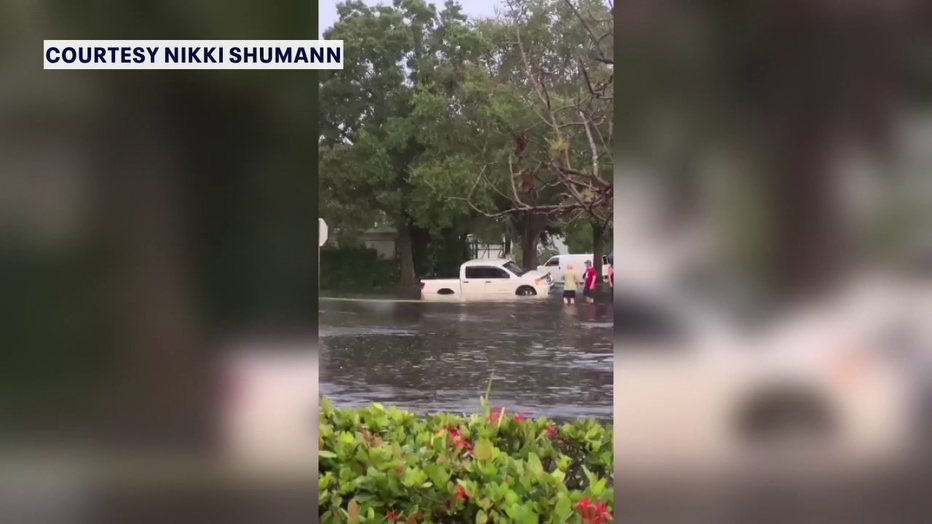
"We are not going to be designing our systems to handle four to five inches in one hour," Tankersley said. "The main reason we can't do that is because it would be significantly expensive. It would be so expensive, it would be prohibitively expensive. It'd be in the billions of dollars and the cost to do that I just don't think that we're prepared to commit ourselves to that kind of cost."
Tankersley said the ground was also already more than saturated, which means the water that the ground would normally soak up is now running off into the streets.
Between 6 p.m. and midnight, St. Petersburg Police responded to 20 accidents and reported 55 stranded cars. Officers also responded to 73 community hazard calls, which include flooded intersections and stalled out vehicles.
READ: 16-year-old struck by truck, injured while waiting at school bus stop in St. Pete
Courtney Melvin was on her way to a workout class in St. Pete when Mother Nature had other plans.
"All the intersections were flooded and there were cars stalled out with their hazards on," she said. "So, I had to decide if I wanted to drive through the intersection or pull over and be safe at the gas station."
She pulled into the gas station and waited for more than an hour until it was safe to drive back home. While she was waiting, she said she witnessed several cars stall out and have to be helped by first responders. Melvin’s drive home, which usually takes 20 minutes, took an hour.
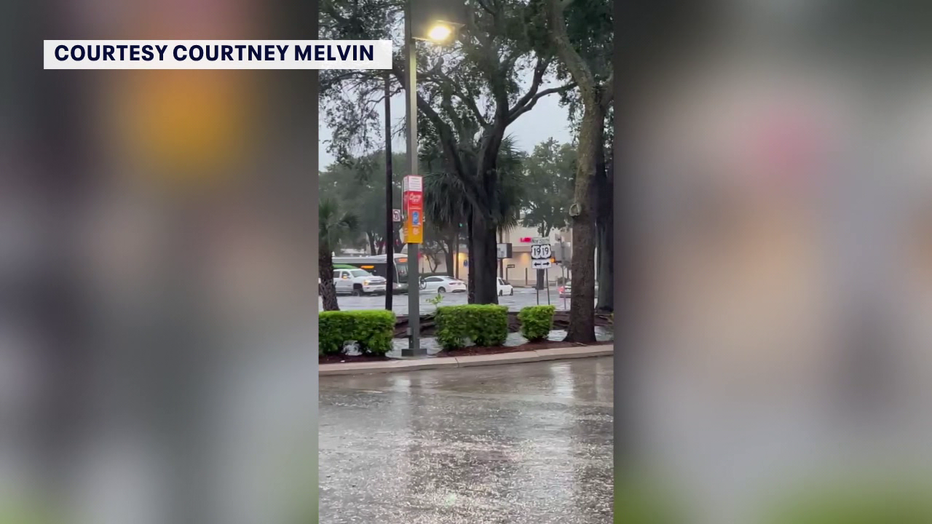
"It actually was really scary. I told myself that I probably wouldn't go out in the storm again if the roads were going to be hazardous like that," Melvin said.
Between 5:30 p.m. and 10 p.m., St. Pete Fire Rescue’s spokesperson said crews responded to 111 emergency calls. Most of the calls were related to vehicles trapped in floodwaters, followed by downed power lines and triggered fire alarms. There were no storm-related injuries.
Joseph Stern has lived along Atlantic Avenue North for more than two decades. His neighborhood, like many others across the city Wednesday, was underwater. Stern said cars lined the street, stalling out.
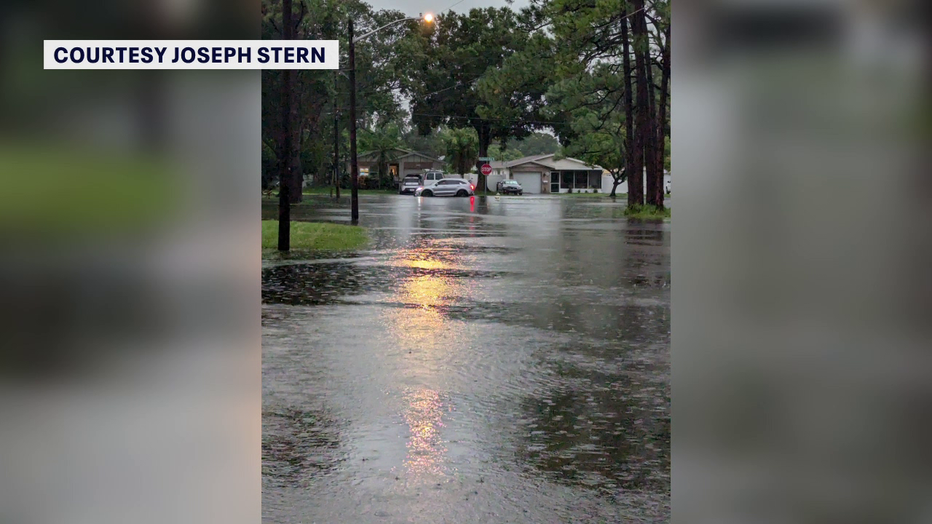
"It has never been this bad," he said. "Last week, I had to park a mile away from my house and walk, basically walk into my neighborhood, and waited about three hours for the water to subside just enough for me to be able to kind of crawl through the water to get home."
Stern said he doesn’t think the city has been prepared for the flooding the area has seen, and blames a lot of it, he said, on the city’s rapid development. He said a new nearby development specifically, he and his neighbors believe, contributed to several flooding issues.
"We're going to have to review our plans. ‘Do I have to go to the grocery store? When can I pick my children up from daycare?’ We're going to have to manage all of that around our weather," Stern said. "The main concern is flooding into our houses. I'm also concerned that the city wasn't prepared for the kind of development that that they've approved."
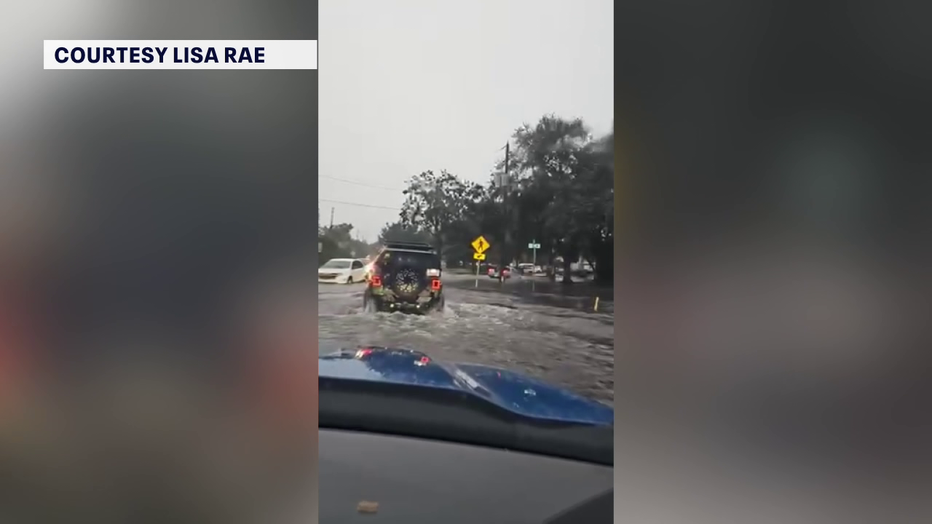
Tankersley said development isn’t to blame, though, for the flooding. He said city staff has specifically checked on the development in question to make sure it was built the correct way, and Tankersley said they found it was.
"Since about the 1980s, whenever a new development comes in, that new development has to get a permit from the Southwest Florida Water Management District, it's a stormwater management permit that the development has to get, and the development has to show that the rate of stormwater flow off of their property is the same after the development is finished as it was before the development of things. We call that pre-development and post-development flow," Tankersley said.
Tankersley said city crews have been inspecting the storm water facilities all week. He said 75 percent of them look good. First responders will also be stationed in areas that experience repetitive flooding during storms to close roads if necessary, Tankersley said.
READ: Tampa officials answer questions about street flooding after 2 days of heavy rain
As far as long-term plans, he said the city has poured more than $1 billion into projects to improve stormwater infrastructure. It’s all part of the Stormwater Master Plan that was just approved. Since 2016, the city said, they have invested about $2 billion to operate, maintain and repair gaining infrastructure and increase resiliency for the future.
"We do believe we got an unusual amount of rain and we've had, unfortunately, a series of unusual storms, basically starting with Debby, and if you look around the country, if you look around the state, you will see that there have been unusual rainfall storms throughout the country," Tankersley said.
Following the storms this week, Tankersley said there have been thousands of gallons of wastewater discharge.
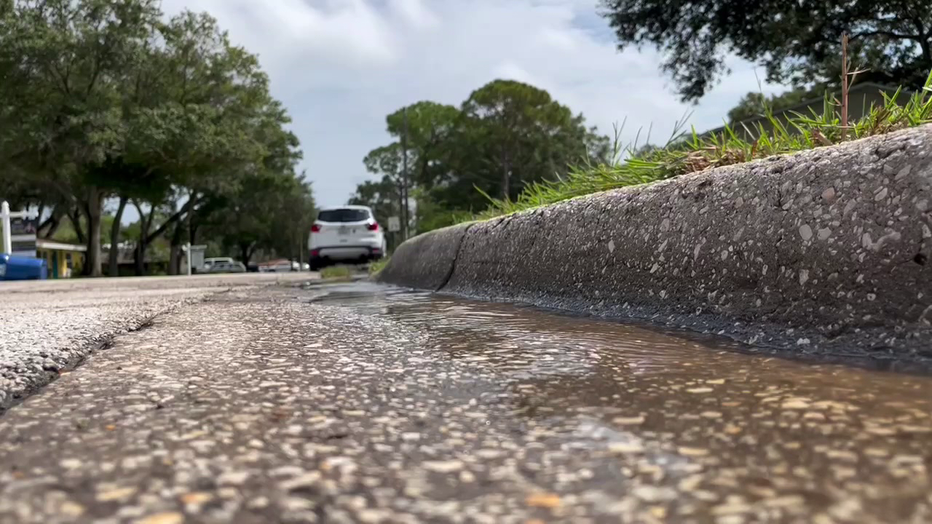
"We believe that the wastewater discharges associated with these storms comes from what we call our private laterals. So, in a wastewater system, you have basically two types of pipes. You have what we call the public owned pipe, which is which is the part of our system that we own, the city owns," he said.
"In order for a customer to get the sewage from their house to our wastewater system, they have to have their own pipe that runs across their own yard. It's called a private lateral. When you look at the length of all the private laterals, the 100,000 plus parcels up through the city, the amount of private laterals we have in our city is probably as large in terms of the number of miles of these private laterals as we have as the public pipes," Tankersley said.
He said the DEP hasn’t fined the city yet for the discharge, but he expects them to.
During Thursday’s City Council meeting, Tankersley gave a presentation to city leaders detailing wet weather from Aug. 21 of this year through Sept. 4. Over about 30 hours during Hurricane Debby, St. Pete got between 10 and 11 inches of rain. The average rainfall for August is 8.8 inches. During August 2024, St. Pete got 20.15 inches of rain.
STAY CONNECTED WITH FOX 13 TAMPA BAY:
- Download the FOX Local app for your smart TV
- Download the FOX 13 News app for breaking news alerts, latest headlines
- Download the SkyTower Radar app
- Sign up for FOX 13’s daily newsletter

